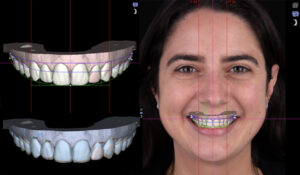Intraoral Scanning: Enhancing Communication and Precision in Dentistry
Introduction
The landscape of modern dentistry has been forever transformed by the advent of intraoral scanning technology. Gone are the days of uncomfortable traditional impressions, as dental professionals now embrace the seamless and precise process of intraoral scanning. This innovative technology not only enhances communication between dental teams but also plays a pivotal role in improving the accuracy and efficiency of dental procedures. In this blog, we will explore the significant impact of intraoral scanning on dentistry, highlighting how it enhances communication and precision for better patient outcomes.
1. The Shift from Conventional Impressions to Intraoral Scanning
Traditional dental impressions often evoked anxiety and discomfort in patients, resulting in inaccuracies and multiple retakes. Intraoral scanning offers a patient-friendly alternative, enabling dental professionals to capture precise digital impressions of the oral cavity with ease and efficiency. The handheld scanner captures detailed 3D images of the teeth and surrounding tissues, providing an accurate representation of the patient’s dentition.
By eliminating the need for messy impression materials and reducing chairside time, intraoral scanning significantly enhances the patient experience, resulting in improved patient satisfaction.
2. Streamlining Communication and Collaboration
Intraoral scanning facilitates seamless communication and collaboration between dental teams, including dentists, dental hygienists, and dental technicians. Once the digital impressions are obtained, they can be shared instantaneously with the entire dental team through secure cloud-based platforms. This real-time communication streamlines the treatment planning process, allowing for immediate feedback and discussion among team members.
Dental technicians benefit greatly from intraoral scanning, as they can access highly accurate digital impressions, enabling precise fabrication of dental restorations, such as crowns, bridges, and aligners. The elimination of physical impression transportation speeds up the workflow, ensuring faster turnaround times for the patients.
3. Enhanced Precision and Accuracy
Accuracy is paramount in dentistry, especially when it comes to creating restorations that fit seamlessly in the patient’s mouth. Intraoral scanning’s digital precision offers unmatched accuracy compared to traditional impressions. The detailed 3D images enable dental professionals to identify even the tiniest nuances and irregularities, resulting in restorations that provide optimal fit and function.
Furthermore, the ability to manipulate digital impressions allows for virtual treatment simulations.
Dentists can use the scanned data to plan complex treatments, such as orthodontic cases and implant placements, with meticulous precision. This digital treatment planning significantly reduces the margin of error, ensuring successful outcomes and reducing the likelihood of unexpected challenges during the actual procedure.
4. Patient Education and Engagement
Intraoral scanning empowers patients to actively participate in their treatment journey. With digital impressions displayed on chairside monitors, patients can visualize their dental condition, making it easier for dentists to explain the treatment options and potential outcomes. This visual aid enhances patient education and understanding, leading to increased case acceptance.
Patients appreciate being involved in the decision-making process, and intraoral scanning fosters a sense of trust and confidence in their dental care providers.
Conclusion
Intraoral scanning has revolutionized dentistry by enhancing communication and precision in the treatment planning process. The seamless capture of digital impressions streamlines communication between dental teams and improves patient engagement, while the unparalleled accuracy of 3D imaging ensures precise treatment outcomes.
As dental technology continues to advance, intraoral scanning will play an increasingly significant role in delivering efficient, patient-centered care, leaving behind the limitations of traditional impressions and embracing the future of precise and comfortable dentistry.




